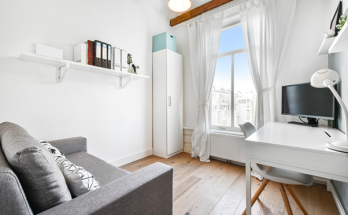If you’ve ever walked into a beautifully designed space that still feels oddly noisy or echoey, you’re not imagining things. The problem often isn’t the furniture, flooring, or even the walls. It’s the ceiling.
For years, designers and builders have poured time and resources into wall treatments and echo reduction solutions while leaving the ceiling to do little more than hold up the lights. But when you start treating ceilings like an equal partner in sound control, everything changes — from the way a room feels to the way people interact inside it.
So, what really happens when you give ceilings the same attention you give your walls?
Why Ceilings Deserve a Seat at the Table
Think of sound as water. It doesn’t just move in one direction; it spreads, bounces, and fills every space it can find. Most of that movement ends up reflecting off flat, hard surfaces, including the ceiling.
In offices, schools, restaurants, and even homes, these reflections can quickly build up into a jumble of noise. Conversations become harder to follow, meetings feel more tiring, and even simple tasks demand extra focus.
When ceilings are treated properly, they help absorb and control those sound waves instead of letting them bounce freely. This leads to calmer, clearer spaces where communication feels effortless.
The Ripple Effect of Ignoring the Ceiling
A well-designed room can still sound terrible if the ceiling is left untreated. All the hard work that goes into acoustic panels on walls, soft flooring, and furniture can be undone when sound escapes upward and bounces straight back down.
Open-plan offices are a classic example. Without any sound-absorbing surface overhead, noise spreads faster, making it tough for people to concentrate. In restaurants, voices and background sounds blend, forcing diners to speak louder, which only adds to the noise.
Ignoring the ceiling doesn’t just affect comfort; it affects productivity, customer experience, and even how people perceive a brand or environment.
How the Ceiling Became the Unsung Hero of Sound Design
Acoustic specialists often refer to ceilings as the “fifth wall,” and for good reason. Modern design trends favour open, airy spaces with lots of glass, metal, and concrete. These materials look great, but are notorious for reflecting sound.
That’s where an acoustic ceiling panel comes into play. Installed strategically, these panels absorb unwanted sound, helping create balance in the room’s acoustic profile. Instead of sound bouncing back, it gets trapped and softened.
When combined with thoughtful layout planning, this can make even the busiest environments like call centres, hospitals, or classrooms noticeably less noisy and more pleasant.
Why the Ceiling Works Better Than You Think
Ceilings offer one major advantage: surface area. They cover a large portion of any room, meaning they can do a lot of acoustic heavy lifting without taking up valuable floor or wall space.
Because sound rises and disperses, ceilings naturally intercept a huge portion of reflected noise. Installing panels is one of the most efficient ways to manage acoustics without cluttering the design.
Better still, today’s acoustic ceiling panel designs come in all sorts of shapes, colours, and materials. You can find options that blend in discreetly or stand out as part of the visual aesthetic, so style never has to take a back seat to sound control.
Everyday Benefits That Go Beyond Sound
When a space sounds better, it feels better. That’s something you notice instinctively, even if you can’t explain why.
In offices, improved acoustics mean fewer distractions and clearer conversations. Teams collaborate more naturally, and meetings don’t feel like a struggle to be heard. In schools, students find it easier to stay focused and engaged because teachers don’t have to raise their voices to be understood.
In healthcare settings, good acoustic design supports calmer environments that help patients rest and recover. Even in homes, especially modern apartments with high ceilings and hard finishes, a little sound control can make a big difference in comfort.
Sustainability and Smart Design Go Hand in Hand
Acoustic design is also about sustainability. Many ceiling panels are now made from recycled or renewable materials, such as natural fibres or repurposed plastics.
These eco-friendly materials help absorb sound efficiently while supporting broader green building goals. Some even contribute to better indoor air quality by meeting strict environmental standards, which makes them a smart choice for developers and designers looking to meet both acoustic and sustainability benchmarks.
Thinking Holistically About Acoustics
The best acoustic strategies don’t treat ceilings, walls, and floors as separate elements. They work together.
A balanced acoustic plan considers the entire space — how sound moves through it, where it reflects, and what materials can manage it most effectively. The ceiling just happens to be one of the most underused opportunities in that equation.
When designers start seeing it as an active acoustic surface rather than a blank canvas, they unlock new ways to improve sound performance without compromising the overall design vision.
The Ceiling of the Future
As workplaces evolve and flexible spaces become more common, demand for better sound control will only grow. Remote meetings, hybrid offices, and multi-purpose rooms all need clear, controlled sound environments.
Manufacturers are already experimenting with advanced acoustic materials that adjust to changing sound levels or integrate with lighting systems. Some designs even include sensor-based panels that monitor noise in real time, allowing facility managers to make data-driven adjustments.
It’s a glimpse of a future where sound management becomes as intuitive as temperature control.
The Takeaway
Treating ceilings as more than just a structural necessity opens up a whole new dimension of acoustic design. It’s not simply about reducing noise, but also about improving the way people experience a space.
Once you start viewing the ceiling as an acoustic partner rather than an afterthought, you’ll notice the difference everywhere: in conversations that flow easily, in rooms that feel calmer, and in buildings that sound as good as they look.



